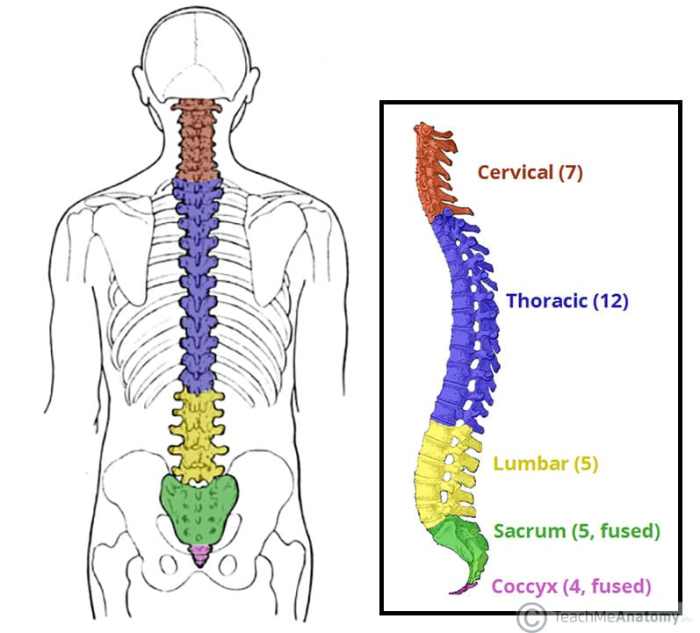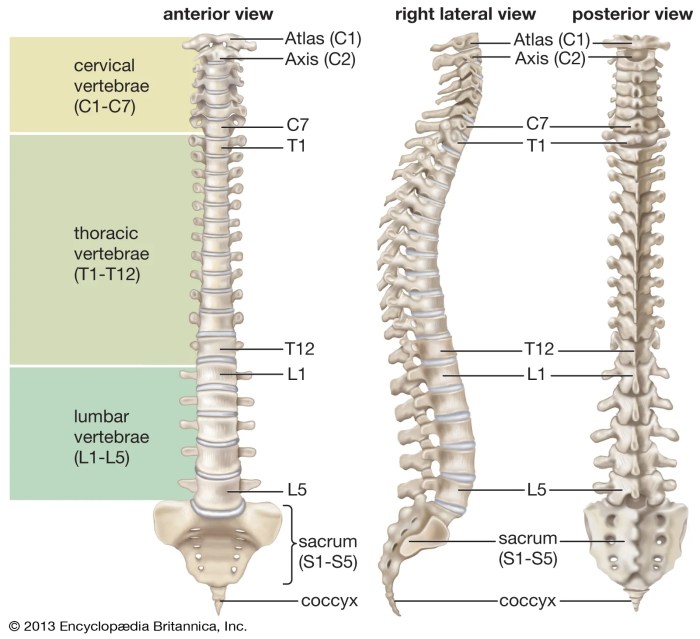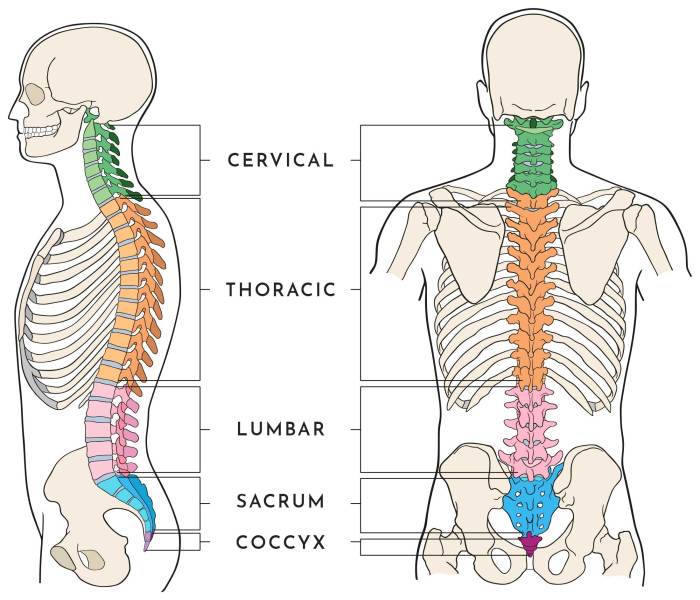Use the diagram to match the regions of the spine – Introducing the Interactive Diagram for Matching Regions of the Spine, an indispensable tool for understanding and visualizing the intricate structure of the spine. This diagram empowers users to engage with the complex anatomy of the spine, making it an invaluable resource for healthcare professionals, educators, and students alike.
The diagram is meticulously designed to provide a comprehensive overview of the spine, allowing users to delve into the distinct regions and their respective functions.
Regions of the Spine

The spine, also known as the vertebral column, is a complex structure that supports the body, protects the spinal cord, and allows for movement. It is divided into five regions: the cervical spine, thoracic spine, lumbar spine, sacral spine, and coccygeal spine.
The cervical spine consists of seven vertebrae that extend from the base of the skull to the shoulders. It is responsible for supporting the head and allowing for a wide range of motion, including nodding, shaking, and turning.
The thoracic spine consists of 12 vertebrae that extend from the shoulders to the waist. It is responsible for supporting the rib cage and protecting the heart and lungs.
The lumbar spine consists of five vertebrae that extend from the waist to the pelvis. It is responsible for supporting the weight of the upper body and providing flexibility for bending and twisting.
The sacral spine consists of five fused vertebrae that form the sacrum. The sacrum is located at the base of the spine and connects to the pelvis.
The coccygeal spine consists of four fused vertebrae that form the coccyx. The coccyx is located at the very bottom of the spine and serves no real function.
Functions of the Spine, Use the diagram to match the regions of the spine
- Support the body
- Protect the spinal cord
- Allow for movement
- Provide flexibility
- Transmit weight
Matching Regions of the Spine

The interactive diagram below allows users to match the regions of the spine. To use the diagram, simply click on the region of the spine that you want to match and then click on the corresponding label. The diagram will then show you whether or not your answer is correct.
The diagram is responsive for different screen sizes, so you can use it on any device.
The diagram can be used to help students learn about the different regions of the spine, as well as to assess their understanding of spinal anatomy.
Clinical Applications
The diagram can be used in clinical settings to help diagnose and treat spinal disorders. For example, the diagram can be used to identify the location of a herniated disc or to plan surgery for a spinal fracture.
The diagram can also be used to educate patients about spinal anatomy. For example, the diagram can be used to show patients where their pain is coming from or to explain how a spinal disorder is affecting their mobility.
Educational Applications

The diagram can be used in educational settings to help students learn about the different regions of the spine. For example, the diagram can be used to illustrate the different functions of the spine or to explain how the spine is protected by the rib cage.
The diagram can also be used to assess students’ understanding of spinal anatomy. For example, the diagram can be used to create a quiz or to test students’ knowledge of the different regions of the spine.
Question & Answer Hub: Use The Diagram To Match The Regions Of The Spine
How does the diagram aid in diagnosing spinal disorders?
The diagram serves as a visual guide for healthcare professionals, enabling them to identify abnormalities in the spine’s structure and alignment, which can be indicative of underlying disorders.
Can the diagram be used to assess students’ understanding of spinal anatomy?
Yes, the diagram can be incorporated into assessments to evaluate students’ knowledge of the spine’s regions and their functions. By matching the regions on the diagram, students demonstrate their comprehension of spinal anatomy.